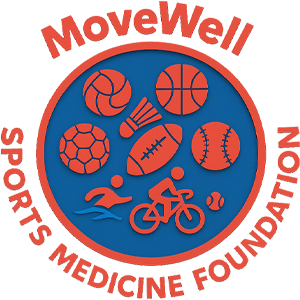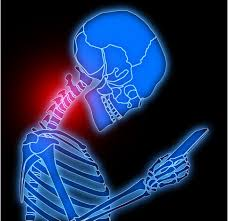The phenomenon of adolescents developing “smartphone neck”! Smartphone neck is becoming increasingly common. This term refers to the prolonged forward head posture adopted when looking down at smartphones, tablets, or computers. Over time, this posture can cause significant strain on the cervical spine, contributing to musculoskeletal pain and even early degenerative changes.
1. Effects of Looking Down on the Cervical Spine
Increased Cervical Load
The human head weighs approximately 4–5 kg (10–12 lb) in a neutral position.
When tilted forward, the stress on the cervical spine increases dramatically:
At 15° → ≈12 kg (27 lb)
At 30° → ≈18 kg (40 lb)
At 45° → ≈22 kg (49 lb)
At 60° → ≈27 kg (60 lb)
(Hansraj, 2014)
Changes in Cervical Curvature
Prolonged forward head posture reduces the natural cervical lordosis (the gentle curve of the neck) and can even cause reversed curvature. This biomechanical change increases disc pressure and is a potential precursor to cervical spondylosis.
(Neupane et al., 2017)
Muscle and Ligament Tension
Continuous neck flexion strains the upper trapezius, levator scapulae, and cervical extensors. Over time, this leads to stiffness, muscle fatigue, headaches, and reduced blood circulation.
(Kang et al., 2012)
2. Common Cervical Spine Disorders
Loss of Cervical Lordosis or Reversed Curvature:
Reduced curvature increases cervical instability, neck pain, and limited mobility.
Cervical Disc Herniation:
Chronic flexion may cause disc bulging or herniation, compressing nerves and causing radiating pain or arm numbness.
Early Degeneration:
Adolescents exposed to long hours of device use may experience early degenerative changes, setting the stage for adult cervical disorders.
(Namwongsa et al., 2019)
3. Prevention and Improvement Strategies
✅ Control Screen Time:
Take a short break or stand up every 30–40 minutes to relieve neck strain.
✅ Maintain Proper Posture:
Keep screens at eye level; avoid bending your neck excessively downward.
✅ Strengthen Supporting Muscles:
Perform daily exercises such as neck rotations, shoulder shrugs, and scapular retractions to build endurance.
✅ Optimize Sleep Posture:
Use a medium-height pillow that maintains the neck’s natural curve.
✅ Seek Early Intervention:
If you experience chronic neck pain, stiffness, or numbness, consult a healthcare professional or physical therapist promptly.
Long-term smartphone and electronic device use poses serious risks to cervical spine health in adolescents. Maintaining correct posture, balancing screen time, and practicing regular neck and shoulder exercises are essential for prevention. With growing device dependence among youth, education on digital posture awareness is key to preventing chronic musculoskeletal issues.
Key References:
Hansraj, K. K. (2014). Assessment of stresses in the cervical spine caused by posture and position of the head. Surgical Technology International, 25, 277–279.
Neupane, S., Ali, U. T., & Mathew, A. (2017). Text neck syndrome – Systematic review. Work, 57(3), 397–405.
Kang, J. H., Park, R. Y., Lee, S. J., Kim, J. Y., & Yoon, S. R. (2012). The effect of the forward head posture on postural balance in long-time smartphone users. Annals of Rehabilitation Medicine, 36(6), 862–869.
Namwongsa, S., Puntumetakul, R., Neubert, M. S., & Boucaut, R. (2019). Factors associated with neck disorders among university students using smartphones. Work, 64(1), 81–89.
Lee, S., Kang, H., & Shin, G. (2015). Head flexion angle while using a smartphone. Ergonomics, 58(2), 220–226.
Straker, L. M., et al. (2016). The impact of mobile technology use on physical and psychosocial well-being in adolescents. Applied Ergonomics, 58, 227–234.


